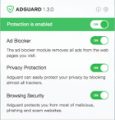What is WebNewSearch
WebNewSearch is supposed to be a program that will improve the browsing experience, but according to security experts, it is an adware. Adware can cause many problems such as unwanted ads and pop ups on your browser, irrelevant search results that redirect to unwanted web-sites, web browser crashes and slow loading websites. Adware software often installs on the Mac with freeware.
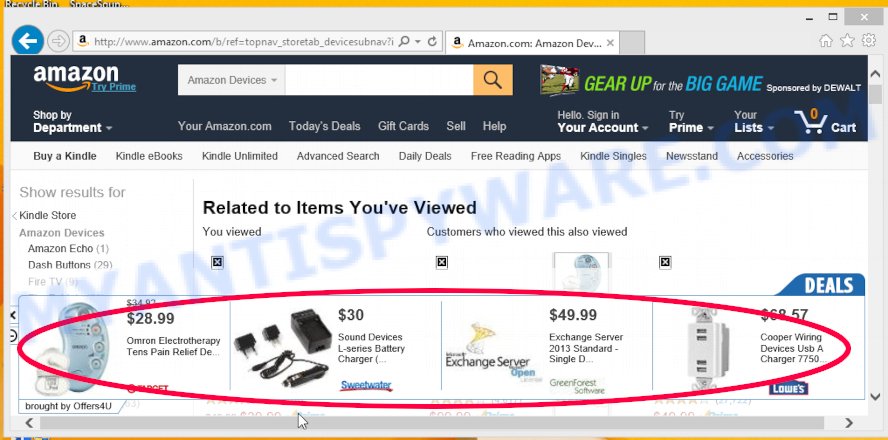
Unwanted ads
The worst is, adware can install a component that enables its author to track which web-sites you visit, which products you look at upon those pages. They are then able to choose the type of advertisements they show you. So, if you had adware software on your machine, there is a good chance you have another that is gathering and sharing your personal data with third parties, without your say-so.
The tutorial below explaining steps to remove WebNewSearch. Feel free to use it for removal of the adware software that may attack Safari, Firefox and Google Chrome and other popular browsers. The instructions will help you delete WebNewSearch adware and thus clean your web-browser from all intrusive ads.
How does WebNewSearch get on your MAC OS
Usually, adware software gets into your Apple Mac as part of a bundle with free applications, sharing files and other unsafe programs that you downloaded from the Web. The creators of adware software pays software authors for distributing adware within their applications. So, additional applications is often included as part of the setup package. In order to avoid the installation of any adware software: choose only Manual, Custom or Advanced installation type and uncheck all optional applications in which you are unsure.
Threat Summary
| Name | WebNewSearch, WebNewSearch 1.0 app |
| Type | adware, PUP (potentially unwanted program), pop-ups, pop-up advertisements, pop-up virus |
| Symptoms |
|
| Removal | WebNewSearch removal guide |
How to remove WebNewSearch adware
When the adware gets installed on your Apple Mac without your knowledge, it is not easy to remove. Most commonly, there is no Uninstall application which simply remove the WebNewSearch adware from your computer. So, we suggest using well-proven free specialized tool like MalwareBytes Free. But the best method to remove WebNewSearch will be to perform several manual steps, after that additionally use antimalware tools.
To remove WebNewSearch, execute the steps below:
- Remove unwanted profiles on Mac device
- Check the list of installed programs
- Remove WebNewSearch related files and folders
- Scan your Mac with MalwareBytes
- Remove WebNewSearch from Safari, Chrome, Firefox
- How to stay safe online
- To sum up
Remove unwanted profiles on Mac device
WebNewSearch can make changes to the Mac system such as malicious changes to browser settings, and the addition of malicious system profiles. You need to check the system preferences, find and remove malicious profiles and ensure your settings are as you expect.
Click the System Preferences icon ( ![]() ) in the Dock, or choose Apple menu (
) in the Dock, or choose Apple menu ( ![]() ) > System Preferences.
) > System Preferences.
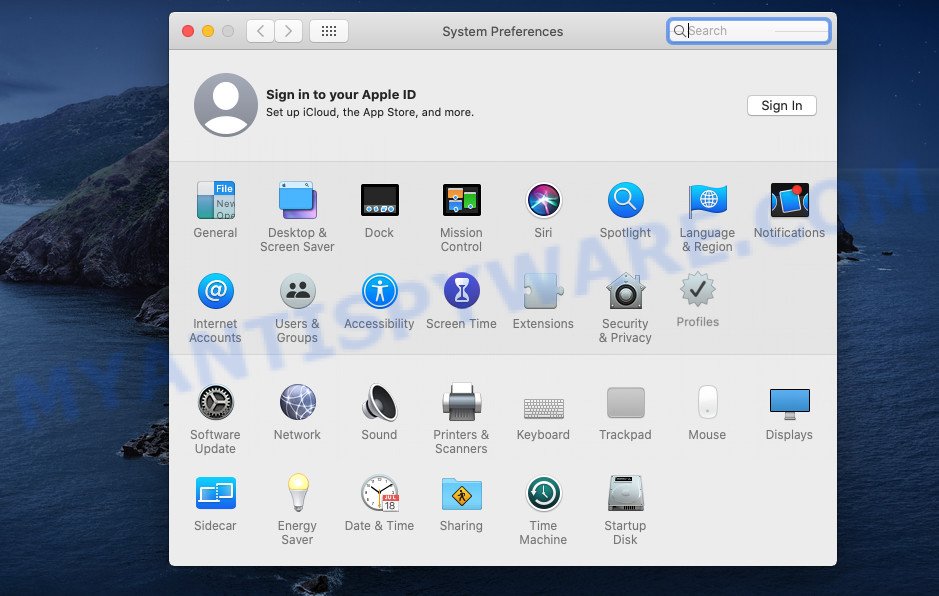
In System Preferences, click Profiles, then select a profile associated with WebNewSearch.
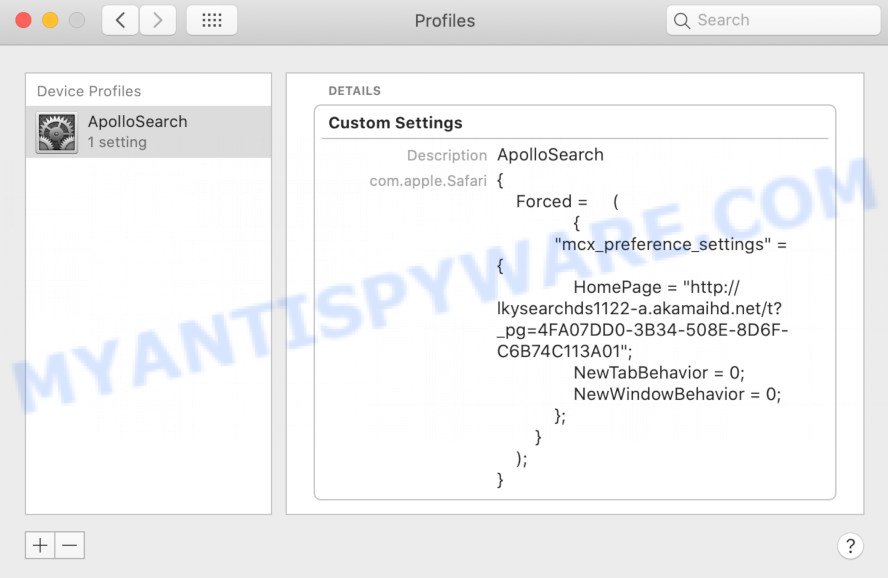
Click the minus button ( – ) located at the bottom-left of the Profiles screen to remove the profile.
Note: if you do not see Profiles in the System Preferences, that means there are no profiles installed on your Mac, which is normal.
Check the list of installed programs
Go to the Finder and delete suspicious apps, all programs you do not remember installing. It is important to pay the most attention to programs you have recently installed. If you do not know what a program does, look for the answer on the Web.
Open Finder and click “Applications”.
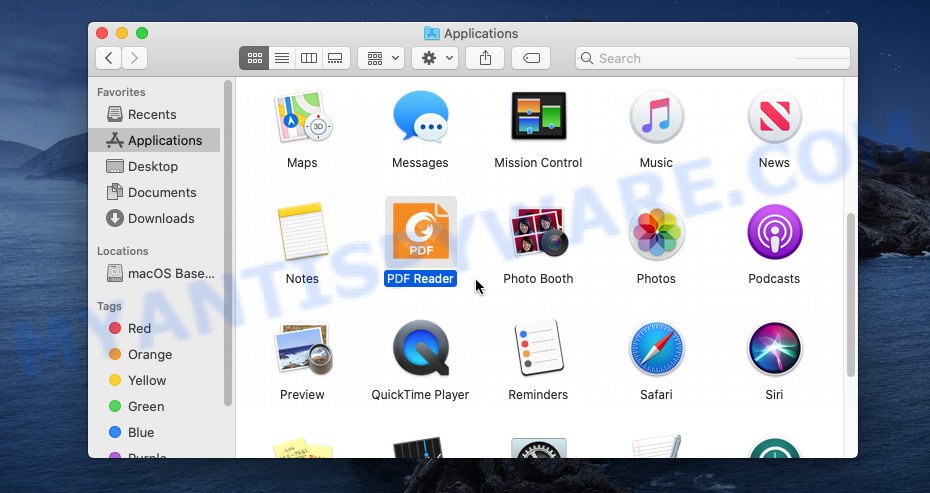
It will open a list of all programs installed on your MAC. Scroll through the all list, and delete any dubious and unknown apps. Right click to questionable application and choose “Move to Trash”. Another method is drag the program from the Applications folder to the Trash.
Most important, scroll through the all list, and move to trash any unknown applications. Don’t forget, select Finder -> Empty Trash.
Remove WebNewSearch related files and folders
Now you need to try to find WebNewSearch related files and folders, and then delete them manually. You need to look for these files in certain directories. To quickly open them, we recommend using the “Go to Folder…” command.
Click on the Finder icon. From the menu bar, select Go and click “Go to Folder…”. As a result, a small window opens that allows you to quickly open a specific directory.

Check for WebNewSearch generated files in the /Library/LaunchAgents folder

In the “Go to Folder…” window, type the following text and press Go:
/Library/LaunchAgents
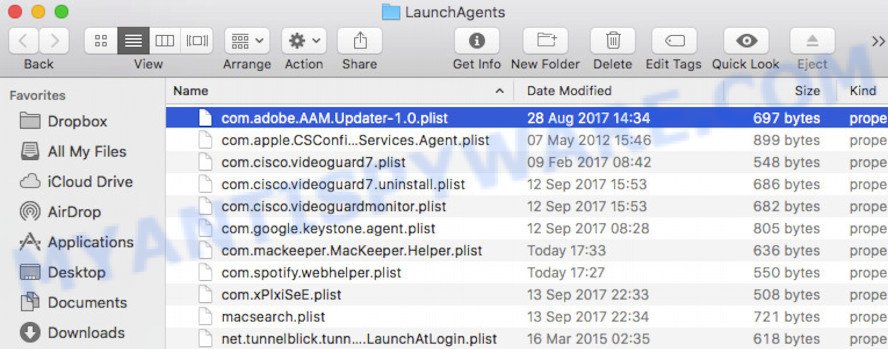
This will open the contents of the “/Library/LaunchAgents” folder. Look carefully at it and pay special attention to recently created files, as well as files that have a suspicious name. Move all suspicious files to the Trash. A few examples of files: search.plist, com.machelper.plist, macsearch.plist, installapp.plist and WebNewSearch.plist. Most often, browser hijackers, potentially unwanted programs and adware software create several files with similar names.
Check for WebNewSearch generated files in the /Library/Application Support folder

In the “Go to Folder…” window, type the following text and press Go:
/Library/Application Support
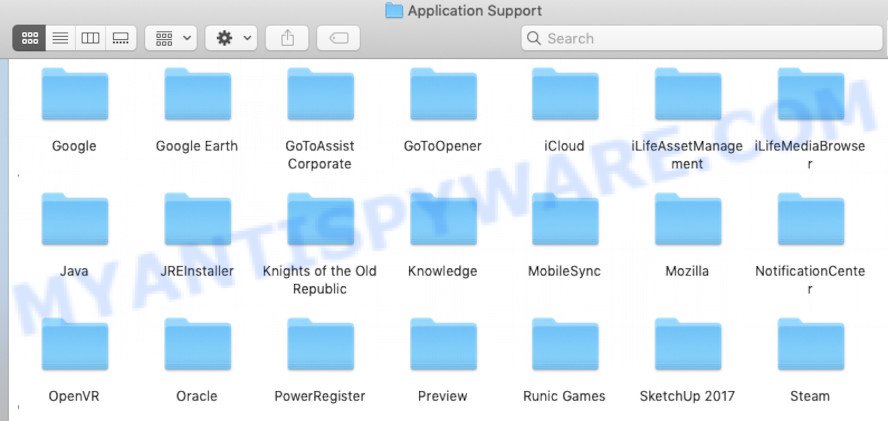
This will open the contents of the “Application Support” folder. Look carefully at its contents, pay special attention to recently added/changed folder. Move all suspicious folders to the Trash.
Check for WebNewSearch generated files in the “~/Library/LaunchAgents” folder

In the “Go to Folder…” window, type the following text and press Go:
~/Library/LaunchAgents

Proceed in the same way as with the “/Library/LaunchAgents” and “/Library/Application Support” folders. Look for suspicious and recently added files. Move all suspicious files to the Trash.
Check for WebNewSearch generated files in the /Library/LaunchDaemons folder
In the “Go to Folder…” window, type the following text and press Go:
/Library/LaunchDaemons

Carefully browse the entire list of files and pay special attention to recently created files, as well as files that have a suspicious name. Move all suspicious files to the Trash. A few examples of files to be deleted: com.macsearch.plist, com.search.plist, com.machelper.plist, com.installapp.plist and com.WebNewSearch.plist. In most cases, PUPs, adware software and browser hijackers create several files with similar names.
Scan your Mac with MalwareBytes
If you are still having issues with the WebNewSearch removal or just wish to check your Mac computer occasionally for adware and other malware, then download MalwareBytes Anti-Malware (MBAM). It is free for home use, and searches for and removes various unwanted software that attacks your MAC OS or degrades MAC performance. MalwareBytes AntiMalware (MBAM) can remove potentially unwanted programs, adware, browser hijackers and toolbars as well as malware, including ransomware and trojans.
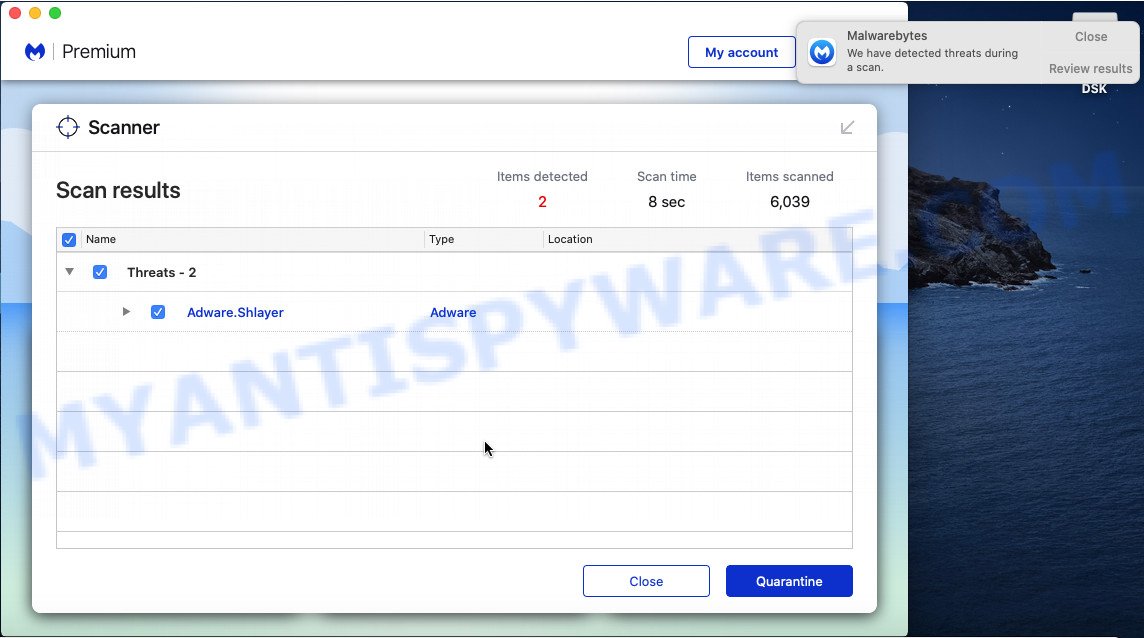
- Please go to the following link to download MalwareBytes AntiMalware (MBAM).
Malwarebytes Anti-malware (Mac)
21017 downloads
Author: Malwarebytes
Category: Security tools
Update: September 10, 2020
- When the downloading process is finished, please close all applications and open windows on your MAC system. Run the downloaded file. Follow the prompts.
- The MalwareBytes Anti-Malware will start and display the main window.
- Further, click the “Scan” button to start scanning your Apple Mac for the WebNewSearch adware. During the scan MalwareBytes will scan for threats exist on your Apple Mac.
- When MalwareBytes AntiMalware has completed scanning your Apple Mac, it will show the Scan Results.
- When you’re ready, click the “Remove Selected Items” button.
- Close the AntiMalware and continue with the next step.
Remove WebNewSearch from Safari, Chrome, Firefox
If you’re still getting WebNewSearch adware, then you can try to delete it by uninstalling harmful extensions.
You can also try to get rid of WebNewSearch by reset Chrome settings. |
If you are still experiencing problems with WebNewSearch adware removal, you need to reset Firefox browser. |
|
How to stay safe online
The AdGuard is a very good ad blocker program for the Safari, Google Chrome and Firefox, with active user support. It does a great job by removing certain types of annoying ads, popunders, pop-ups, undesired new tab pages, and even full page ads and web-page overlay layers. Of course, the AdGuard can block malicious web-pages automatically or by using a custom filter rule.
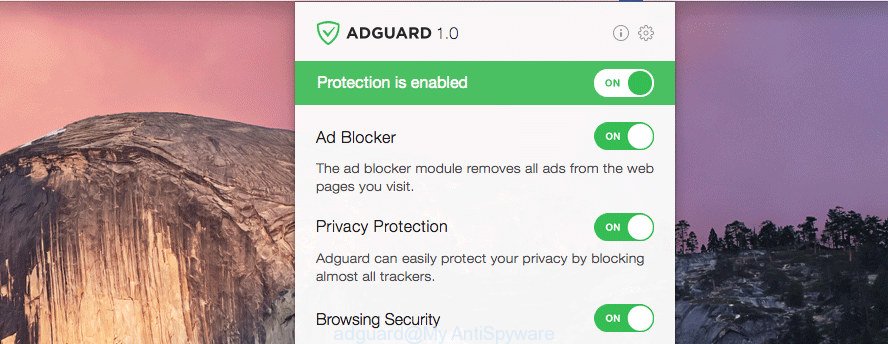
Visit the page linked below to download the latest version of AdGuard for Mac.
3779 downloads
Author: © Adguard
Category: Security tools
Update: January 17, 2018
After the download is complete, run the downloaded file. The “Setup Wizard” window will show up on the computer screen.
Follow the prompts. AdGuard will then be installed. A window will show up asking you to confirm that you want to see a quick tutorial. Click “Skip” button to close the window and use the default settings, or click “Get Started” to see an quick instructions that will assist you get to know AdGuard better.
Each time, when you start your machine, AdGuard will launch automatically and stop annoying pop up ads, block harmful and misleading web-pages.
To sum up
Once you have done the few simple steps above, your computer should be clean from WebNewSearch adware and other malicious software. The Google Chrome, Safari and Mozilla Firefox will no longer redirect you to various unwanted web-pages and online ads. Unfortunately, if the steps does not help you, then you have caught a new adware, and then the best way – ask for help here.

